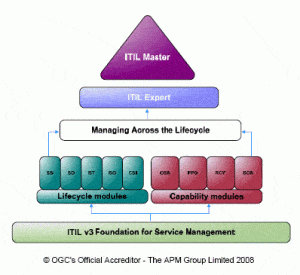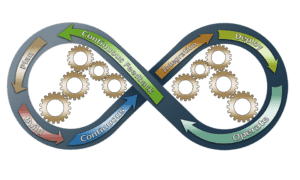How Many ITIL Rules are There?

ITIL stands for Information Technology Infrastructure Library – a bundle of practices used to manage IT services. With its rules and principles, it’s a valuable asset for firms around the globe. But how many rules are there in ITIL? How many ITIL rules are there?
Understanding ITIL
ITIL: Short for Information Technology Infrastructure Library. A framework that offers guidance and best practices for IT service management. It helps organizations improve their IT services. With guidelines, ITIL provides a structured approach to managing IT services.
The key to ITIL lies in understanding its fundamental principles. The foundation of ITIL. By familiarizing yourself with these, it gives you insights on how to align IT services with business objectives. Optimize processes, minimize risks, and deliver high-quality services.
ITIL includes interconnected components. The service lifecycle is the core; such as service strategy, design, transition, operation, and continual service improvement. Each stage is important to ensure services are correctly aligned, and they deliver maximum value.
The number of rules in ITIL isn’t fixed. It has a flexible framework that can be tailored to each organization’s needs. This adaptability allows businesses to implement only the components that are relevant to them, while still adhering to industry best practices.
Stay ahead of the competition with ITIL. Embrace its principles and recommended practices. Enhance overall performance and deliver exceptional IT services. Leverage the power of ITIL and revolutionize your organization’s approach towards IT management.
ITIL Rules
What is ITIL? It stands for Information Technology Infrastructure Library and is a framework offering guidelines for IT service management. It has a set of rules that companies can use to improve their IT services and provide value to clients. Let’s have a closer look at some of the key ITIL rules. Here they are in a table form:
| Rule | Description |
|---|---|
| Incident Management | Deals with handling and resolving incidents quickly to reduce business disruption. |
| Change Management | Manages changes to IT infrastructure in a controlled way, reducing risk of negative effects. |
| Problem Management | Identifies and deals with causes of recurring incidents, preventing future disruptions and improving quality. |
| Service Level Management | Involves setting, monitoring and managing SLAs (service level agreements) between provider and customer. |
| Continual Service Improvement | Analyzes & improves IT services by finding areas for enhancement and implementing changes. |
These are just some rules. There are more in the framework covering various aspects of IT service management. Organizations can choose the ITIL rules that work best for their objectives and apply them. According to AXELOS, there are 26 processes in the framework, ranging from incident management to portfolio management.
Overview of ITIL Framework
ITIL stands for Information Technology Infrastructure Library. It’s a guide for best practices in managing IT services. It gives companies a method to use and improve their IT service processes.
Here’s the basics:
- ITIL is a set of rules to follow for IT service management.
- It has five parts, called the Service Lifecycle.
- The five pieces are Service Strategy, Design, Transition, Operation, and Continual Service Improvement.
- The main idea is to align IT services with the needs of the business and customers.
To explain more, each part of ITIL provides guidance for certain activities. For example, Service Strategy focuses on making strategies that meet business goals and give value to customers. Service Design, on the other hand, is about creating new or changed services to satisfy customers.
Breaking Down ITIL Rules
Text: ITIL – Information Technology Infrastructure Library – encompasses many practices for managing IT services. Let’s break down the five main rules of ITIL and look at their key aspects.
Rule 1 is Service Strategy.
Rule 2 is Service Design.
Rule 3 is Service Transition.
Rule 4 is Service Operation.
Rule 5 is Continual Service Improvement.
These five rules form the structure of ITIL, but each one contains multiple components and processes for efficient service management. ITIL was originally called GITIM (Government IT Infrastructure Management) and was developed by the UK government’s Central Computer and Telecommunications Agency (CCTA) in the late 1980s.
One example that shows the importance of following these instructions is that of a global company having persistent issues with their online platform. After bringing in ITIL practices such as incident management, problem management, and change management, they were able to find repeating patterns in the incidents and take preventative action to tackle the root causes. This not only solved the problems but also increased overall system reliability and customer satisfaction.
Now, as technology is vital to businesses, it’s essential to understand and apply ITIL rules. By understanding the details of ITIL’s methodology, we can use it to optimize operations. Trying to master ITIL is like trying to tame a wild octopus with one hand!
Challenges in Implementing ITIL Rules
Implementing ITIL rules can present a few challenges. These can be grouped into three main points:
- Resistance to Change: Employees may not welcome the adoption of new processes and practices. This could obstruct progress and make implementing ITIL hard.
- Lack of Understanding: If staff don’t fully understand ITIL, they may find it tough to align their behavior with its principles. This can result in inconsistent application of ITIL.
- Resource Constraints: Implementing ITIL needs financial investments, training, and personnel allocation. Some orgs may have limited budget or skilled staff – this can slow down the process.
Organizations must also ensure that their implementation is suitable for their requirements and circumstances. A global tech company’s experience is proof of this. They had a lot of resistance from employees and had to manage it with communication and change management strategies. Also, due to budget restrictions, they had to prioritize resource allocation, which caused slower progress.
Benefits of Adhering to ITIL Rules
Adhering to ITIL rules brings many advantages, including:
- Streamlined IT Operations: With ITIL, processes and workflows are standardized. This leads to better coordination among teams and efficient resource usage.
- Improved Service Quality: By following ITIL’s guidance, organizations can deliver services that meet customer expectations, leading to and increase in customer satisfaction and loyalty.
- Elevated Customer Satisfaction: Adhering to ITIL rules helps businesses comprehend their customers’ needs, resulting in improved relationships, repeat business, and positive word-of-mouth.
- Continuous Improvement: Regular monitoring, evaluation, and feedback mechanisms are part of ITIL, so businesses can stay current with industry best practices and adapt accordingly.
Background: ITIL was created in the 1980s by the UK government’s Central Computer and Telecommunications Agency (CCTA). It became increasingly popular globally as businesses saw its potential for improving service delivery and operational efficiency. Nowadays, ITIL is a leading best practice framework for managing IT services in both the public and private sectors.
Many ITIL Rules
In ITIL, there are many rules. Every part of the framework supports and elaborate system for controlling IT service management. The exact number of ITIL rules can vary since the framework is adjustable and can be changed to fulfill organizational needs. But the main guidance is made up of 26 processes and functions.
These involve incident management, problem management, change management, and more, which construct a consistent structure for successful IT service delivery. Though 26 seems like a lot, it’s essential to remember that these processes and functions are connected. They work nicely together to guarantee smooth operations and help continual improvement in and organization’s IT services.
Frequently Asked Questions (FAQs)
Q1: How many ITIL rules are there?
A1: ITIL (Information Technology Infrastructure Library) does not have specific rules. It is a set of best practices for IT service management consisting of five core publications known as ITIL books.
Q2: What are the five core publications of ITIL?
A2: The five core publications of ITIL are Service Strategy, Service Design, Service Transition, Service Operation, and Continual Service Improvement.
Q3: Are there any changes in the number of core publications in ITIL?
A3: Yes, there have been updates in ITIL. Previously, there were only five core publications, but with the latest version (ITIL 4), there is and additional core publication called “ITIL Managing Professional.”
Q4: Can you provide more information about the ITIL Managing Professional publication?
A4: The ITIL Managing Professional publication focuses on the practical application of ITIL concepts and practices in the modern digital world. It provides guidance on creating and delivering value through IT-enabled services.
Q5: How can I access the ITIL core publications?
A5: The ITIL core publications can be purchased online from official sources. They are available in both printed and digital formats.
Q6: Are there any prerequisites for learning ITIL?
A6: There are no specific prerequisites for learning ITIL. It is recommended to have some prior knowledge or experience in the field of IT service management, but it is not mandatory.
















Leave a Reply